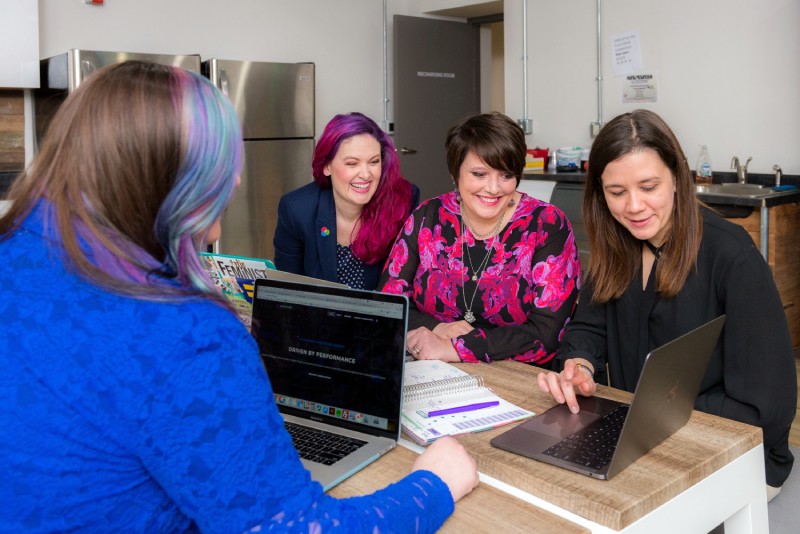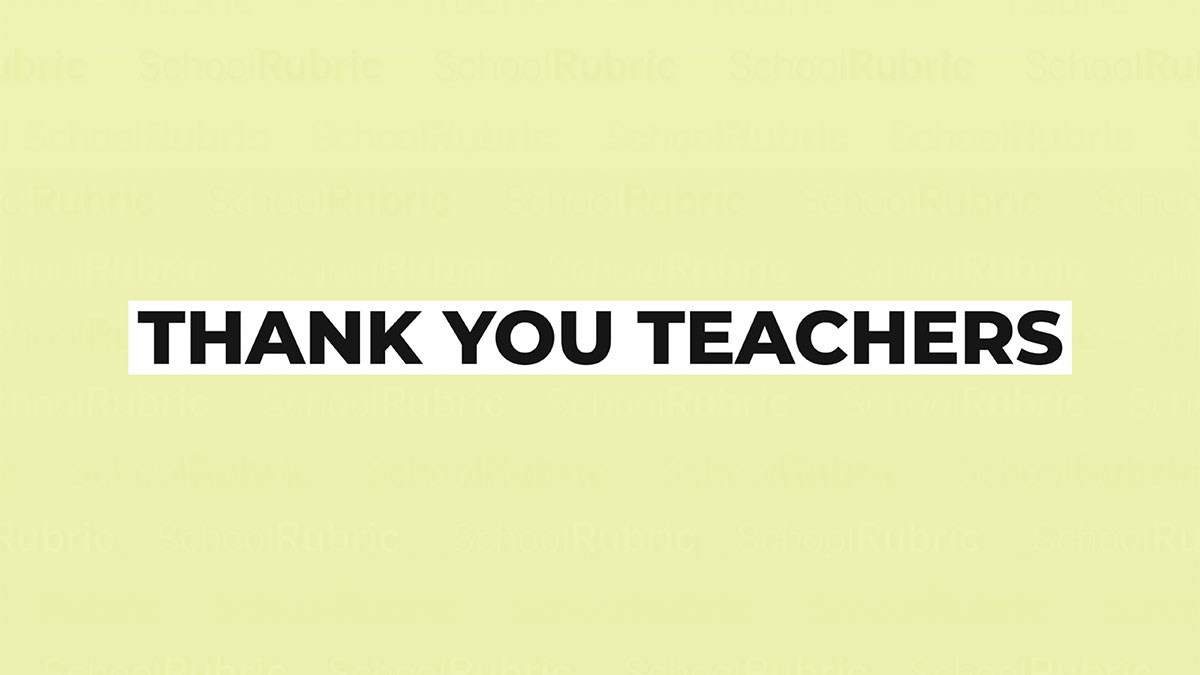There’s a Better Way to Evaluate Teachers: Trust-Based Observations

The teacher observation process is supposed to improve teaching and learning, but it’s not. Research says that despite all the work that has been put into improving teacher observations over the last two decades, these efforts have not resulted in teaching and learning gains. The most compelling evidence comes from the 2018 final report on the Gates Foundation’s Intensive Partnerships for Effective Teaching Initiative. This seven year, $200 million effort was designed to improve teacher effectiveness, student achievement, and graduation rates through the development of more robust measures of teacher effectiveness used for evaluation. Despite the money and time spent, in the end, there was no significant and sustained teacher or student performance improvement (Stecher, et. al.,2018).
So, what’s going on? I believe the core problem is that trust is missing. Let’s start with John Hattie’s assertion in Visible Learning of the ideal conditions for improved teaching, “When observers take supportive actions, trust develops, which reduces the vulnerability that teachers experience as they take on new and uncertain tasks; it facilitates teachers’ efforts to innovate in order to develop more effective instruction, and leads to greater effort to implement successful innovations.(2009)” Now add in Anthony Bryk’s results from his research in Trust in Schools on conditions for successful schools, conditions that align with Hattie’s (2002), “The bottom line is that teacher principal trust is primarily explained by the principal’s actions to develop supportive ties that relieve teachers’ sense of vulnerability.”
Now let’s contrast Hattie’s ideal for achieving teaching improvement and Bryk’s conditions for trust building with what happens with the predominant teacher evaluation models. These current models are designed to promote improvement through, as described, “robust measures for teacher effectiveness.” Specifically, their idea is that teacher effectiveness will be improved by having a large numbers of indicators of good teaching practice, in some cases over 60 indicators, combined with the rating/grading of teachers on these indicators.

The problem is these efforts achieve the opposite of the desired effect, trust, that supportive actions build, and in fact, evoke fear and increase feelings of vulnerability. As Matt O’Leary, whose career has been dedicated to researching the observation/evaluation process found, “Rating teachers’ (pedagogy) inhibits their growth; as soon as evaluative or developmental rating enters the picture teachers become cautious, fearful, and stop taking risks (2017).” In other words, when fear is present trust is absent, and the chance teachers will take big risks to innovate and grow their practice is minimized. Though not intended, the efforts to make observations more effective end up forgetting about the importance of trust, thus factoring into the results Bryk (2002) wrote about, “Relational trust is a vital but neglected factor in school success. Absent relational trust building, improvements in the quality of schooling remain unlikely.”
In essence, observations have been done to teachers, not in collaboration with them. And that’s where we are, a system designed to improve teaching and learning inadvertently inhibits trust, and therefore, risk-taking and innovation. As Simon Sinek (2009) pointed out in Start with Why, “If there were no trust, then no one would take risks. Only when individuals can trust will they take personal risks in order to advance the organization.”
There is good news though, even though observations aren’t currently improving teaching and learning, there is a way they can. In my new book, Trust-Based Observations (TBO), I lay out a comprehensive system that builds trust which fosters teacher risk-taking and innovation. Knowing that growth happens when people persist in taking risks, two actions must be taken. Ingredients that build trust and cultivate the confidence to take risks must be added, and obstacles that inhibit trust and risk taking must be eliminated.
Beginning with additions, the most important action to take is working to build trusting, differentiated relationships with each teacher. So, how do we build trust? An excellent place to start is with an understanding of and empathy for the complete vulnerability that is the teacher observation process. There is no other job that I’m aware of where the boss comes into the employee’s office as it were, sits down, and watches them work while taking graded notes on what they see. The employee then waits and worries until the boss is ready to tell them the results. Sharing your understanding of the vulnerability of this process builds trust. When observers also empathize with the other challenges of teaching, like the unpredictability of working with the developing minds of young people, or teaching during Covid-19, and use their emotional intelligence to guide their interactions with teachers, it builds trust. When principals understand that every action they take influences relationship and are cognizant of the words and tone they choose, actions aligned with this understanding, like being kind, practising empathy, and using emotional intelligence, they demonstrate support and begin to build trust with their teachers.
How else do we build trust? Through time, patience, and frequency of contact. As Brené Brown (2012) writes in Daring Greatly, “Trust is built a marble at a time.” It’s a process. In traditional models where visits are so infrequent that neither party can remember the last visit well, trusting relationships are difficult to build. In TBO, there is a continuous cycle of 12, 20 minute, unannounced observations and reflective conversations per week.This continuity and frequency allow observers to spend significant, regular blocks of time with each teacher, which is foundational for building trust.
The reflective conversations, with the following changes made to them, is where we build that trust. In TBO:
- Conversations occur in teachers’ rooms because they feel more comfortable in their own space;
- Principals sit beside the teacher, looking at the template together, instead of across from them to minimize the power differential that inherently exists between the jobs.
- Conversations begin not by talking, but by asking reflective questions and listening. The questions that lead these conversations are:
1. What were you doing to help students learn?
2. If you had it to do over again, what, if anything, might you change?
These questions send a message that reflection is an expected part of practice, and listening instead of talking first sends a message that observers care about what teachers have to say.
- Next, observers share evidence of observed teaching strengths, but not accompanied by ratings. As a matter of fact, for at least the first three conversations, observers don’t offer any suggestions, even if the teacher asks. Patience builds trust, as does taking the time to really get to know your teachers as teachers. The remarkable thing about waiting, is that in doing so, teachers will frequently ask where they can improve before you are ready to offer a suggestion, which is surely a good sign that trust is being built.

Though these actions combined work to build trust, there is still the problem of removing actions that inhibit trust, meaning the rating of pedagogy. Here’s the tricky part; evaluation has to be part of any job, but rating pedagogy causes fear. What to do? No one would argue that it’s unfair to evaluate planning and preparation, professionalism, or collegiality and collaboration; they are elements that play into the success of any job involving human interaction. So, how do we eliminate the rating of pedagogy, yet have a fair and comprehensive evaluation system that doesn’t cause fear?
First, a small detour is required. Aiming to foster growth mindsets and risk-taking, TBO works to manifest these conditions by connecting professional development (PD) directly to observations.
TBO creates professional development communities (PDC) which meet regularly and are centered around the TBO template’s nine areas of pedagogy. Teachers choose the PDC that aligns with their annual action research big goal. Teachers work concurrently on their goals and professional growth in their PDC, and they regularly review progress and make adjustments when necessary, during their reflective conversations with observers. Finally, connected to PD, when observers see their teachers in action so frequently, they discover who is best at what areas of teaching. Observers use this information to empower in house experts to lead each PDC. The result is empowered, risk-taking teachers demonstrating growth mindsets.
Moving back to the evaluation problem, TBO eliminates the growth inhibiting rating of pedagogy and replaces it with the evaluation of mindset, but with the caveat that TBO, by virtue of its just described system, has created a mechanism that almost automatically fosters at least a proficient level of growth mindset. Frankly, it would take a monumentally fixed mindset not to participate in the PDC and goal setting process.
Controversial? Maybe. Certainly the elimination of the rating of pedagogy is outside the current norms, however concerns about the difficulty of grading teachers while also working to promote professional growth have been repeatedly been expressed by educational experts for over fifty years. If the results of this change and these efforts are that teachers embrace risk-taking necessary to grow practice and teaching and learning improves, then isn’t it worth it? It’s time to put Trust-Based Observations into practice and support our teachers. It is a better and more constructive path forward in support of improved teaching and learning.
This article is available and can be accessed in Spanish here.
Brown, Brené. Daring Greatly: How the Courage to Be Vulnerable Transforms the Way We Live, Love, Parent, and Lead. London: Penguin Life, 2012.
Bryk, Anthony S., and Barbara L. Schneider. Trust in Schools: a Core Resource for Improvement. New York: Russell Sage Foundation, 2002.
Hattie, John. Visible Learning: a Synthesis of Over 800 Meta-Analyses Relating to Achievement. Abingdon: Taylor & Francis Ltd, 2008.
O’Leary, Matt. Reclaiming Lesson Observation: Supporting Excellence in Teacher Learning. London ; New York: Routledge, 2017.
Sinek, Simon. Start with Why. New York, Penguin Publishing Group, 2009.
Stecher, Brian M., Holtzman, Deborah J., Garet, Michael S., Laura S., et al. “Impacts of the Intensive Partnerships Initiative.” RAND Corporation, June 21, 2018. https://www.rand.org/pubs/research_reports/RR2242.html.


